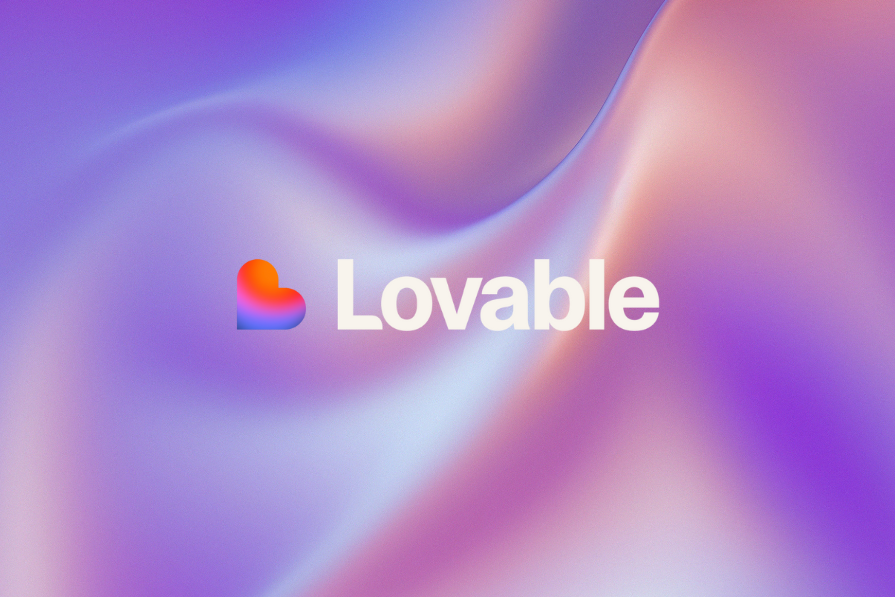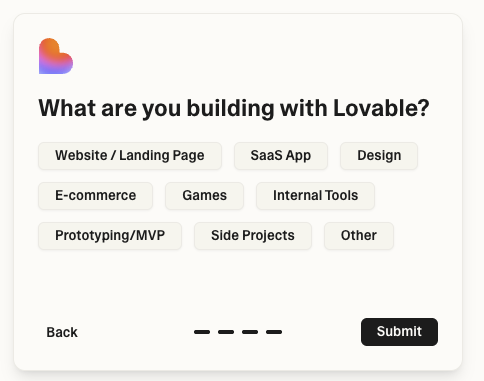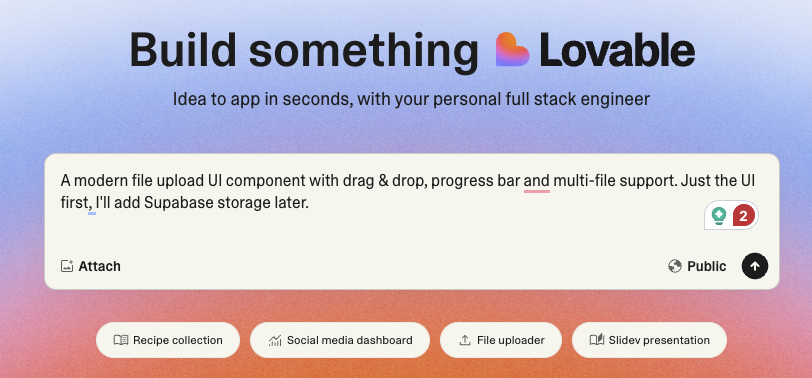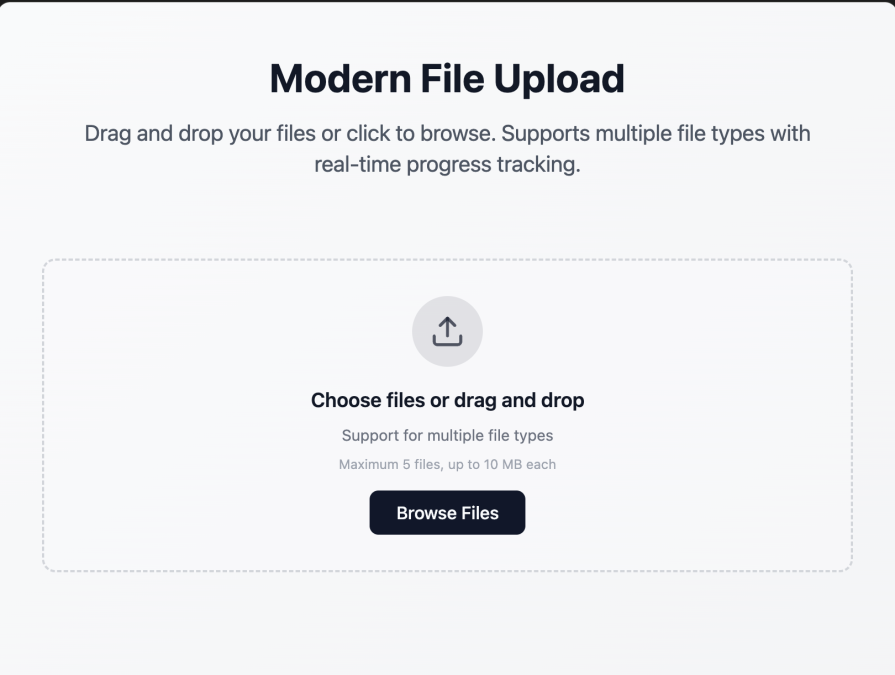Lovable AI is blowing up UX workflows — here’s how
Lovable is one of the fastest-growing tech products ever, reaching $10 million ARR in just two months and attracting over 500,000 daily active users. That kind of explosive growth is rare — and it’s a signal that something bigger is happening.
Lovable isn’t just another no-code tool. It’s reshaping the way we approach UX, product development, and even team collaboration. For designers, product managers, and builders of all kinds, it marks a shift toward a future where building usable, testable, and visually polished products is just a few prompts away.
And it deserves a dedicated deep dive. So, let’s get into that.
What is Lovable AI?
Lovable is a generative AI platform that converts natural language prompts into working products within minutes. Think working frontends. Real backends. APIs. Logic. And a surprisingly thoughtful user experience layer — considering it’s all built without touching a line of code.
You can use Lovable to:
- Build marketing sites and landing pages
- Spin up internal dashboards or tools
- Generate full SaaS products
- Prototype multi-screen apps and user flows
It accepts text prompts (like, “Build me a customer onboarding flow for a SaaS tool”), and, optionally, design files or brand assets. In less than a minute, you’ll get deployable code and a working interface — often with sensible UX choices baked in.
Look at this prompt example:
And here’s the result. A clean, mobile-responsive UI with working logic and file handling — all in about 20 seconds:
And yes, that’s not perfectly optimized code. But it does deliver decent, properly working code for a working product with a polished UI. For free. In minutes.
That’s pretty revolutionary.
Why pay attention to Lovable AI?
Prototyping in hours
Designers have long used prototyping tools like Figma or Framer to visualize ideas. But bridging the gap between design intent and actual product behavior still takes time, especially when engineering handoff is involved.
Lovable eliminates that wait. With it, you can test full interaction flows, logic, and basic UI in hours — not days or weeks.
UX impact:
- Try multiple UX patterns for the same feature and A/B test them quickly
- Validate usability through clickable, functioning interfaces rather than static wireframes
- Get earlier feedback from stakeholders or users
I would recommend you start with high-friction or uncertain flows, like sign-up journeys, pricing selectors, or onboarding walkthroughs.
Faster MVPs with lower risk
Historically, MVPs were a gamble. Teams invested weeks (or months) into building something barely viable — just to test if users cared. Lovable flips that. With a few thoughtful prompts, you can spin up a working product, test demand, gather feedback, and iterate — all without engineering dependencies.
Example MVPs Lovable can support:
- A lightweight SaaS app to test pricing pages and user onboarding
- A B2B internal dashboard for client feedback collection
- A customer-facing chatbot or help center
If an MVP takes $0 and 2 hours, there’s no excuse not to test it, right?
Internal tools on demand
Every team needs tools for resource planning, time-off tracking, or event management. But most organizations either overpay for SaaS or rely on hacked-together Google Sheets.
Lovable lets you generate internal tools that are:
- Functional (not just mockups)
- Custom to your team’s needs
- Visually clean and intuitive
- Easy to maintain or improve via new prompts
And since internal tools don’t require high polish or perfect accessibility compliance, Lovable’s output is often “good enough” — and far cheaper than building from scratch.
Technical proofs of concept
Although I wouldn’t recommend Lovable to build scalable, complex products, it can still make their development significantly easier.
Whatever you need to build, start with a prompt and see what happens. Although the code produced by Lovable won’t be perfect, it’ll give you some inspiration on how it can be structured and how it can work.
Microservices and isolated components
Lovable can also help break big products into smaller, independently generated parts. For example, you can use it to build:
- A user verification module
- A password reset workflow
- An appointment scheduling engine
You then hook these into your broader product architecture. While Lovable won’t replace traditional development for scalable apps, it’s great for bootstrapping individual pieces.
Figma x Lovable integration
Prompting the perfect design and making sure everything is on brand with just natural language is a cumbersome task. Luckily, we don’t have to do that!
You can:
- Export your Figma files directly to Lovable
- Let Lovable infer logic from the layout
- Use prompts to define expected behavior and transitions
Pro tip — Lovable performs better when you pair visual clarity with prompt clarity. Clean layers, naming conventions, and flows in Figma = better output.
There’s a dedicated documentation page on the Lovable website on how to do that, but if you want to get the most important gist and relevant tips and tricks, check out our Lovable x Figma YouTube video.
Industry impact
Lovable isn’t perfect, and there’s a lot that needs improvement. Still, it’s growing extremely fast, getting new capabilities every month.
Lovable and copycats that’ll soon arrive on the market will change the way we work. Just as developers have Microsoft Copilot as a coding partner, designers and product managers will have Lovable as a copilot in their daily work.
Design and development will also overlap a lot. In the past, we’ve had a distinctive design phase, which ended with a polished UI, and then a development phase, which made it come to life. Now, both of these things might happen simultaneously, prompting the best design and seeing it change on the screen — with working code included.
Everyone will be able to become a creator. In the past, you needed to either be a truly multi-faceted professional – handling design, coding, etc. on your own — or have enough capital to hire the right people to do the job. Today, you just need an idea and some prompt engineering skills. Lovable or similar tools can handle the UI, backend, and frontend development. Although not perfect, it’s more than enough for early-stage development.
With that in mind, I expect a rise in the number of micro-startups — one or a few-person companies that build very niche, focused products. The lower barrier of entry will encourage more innovators to actually build, making the market more competitive for businesses and better for consumers.
Although it’s hard to fully predict what the industry impact is going to be — Lovable and similar tools are just evolving too fast. One thing is certain — it’s a precursor of bigger shifts in how we build products.
The post Lovable AI is blowing up UX workflows — here’s how appeared first on LogRocket Blog.
This post first appeared on Read More





